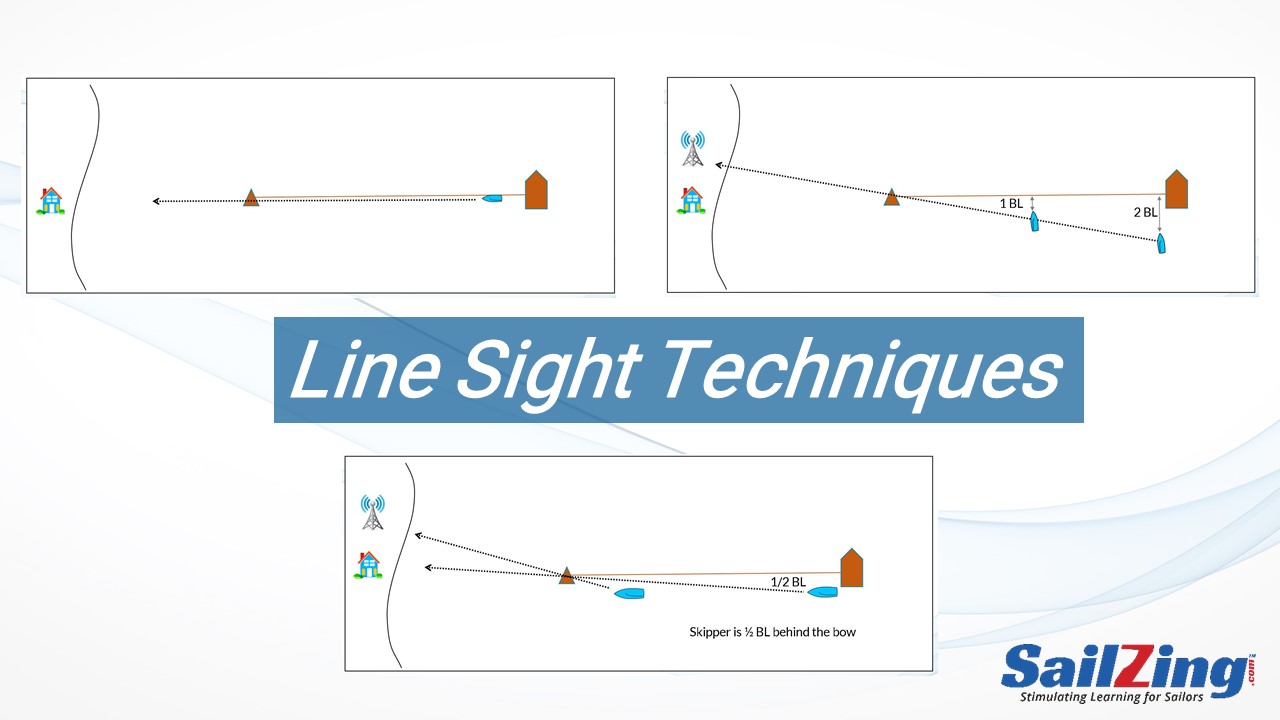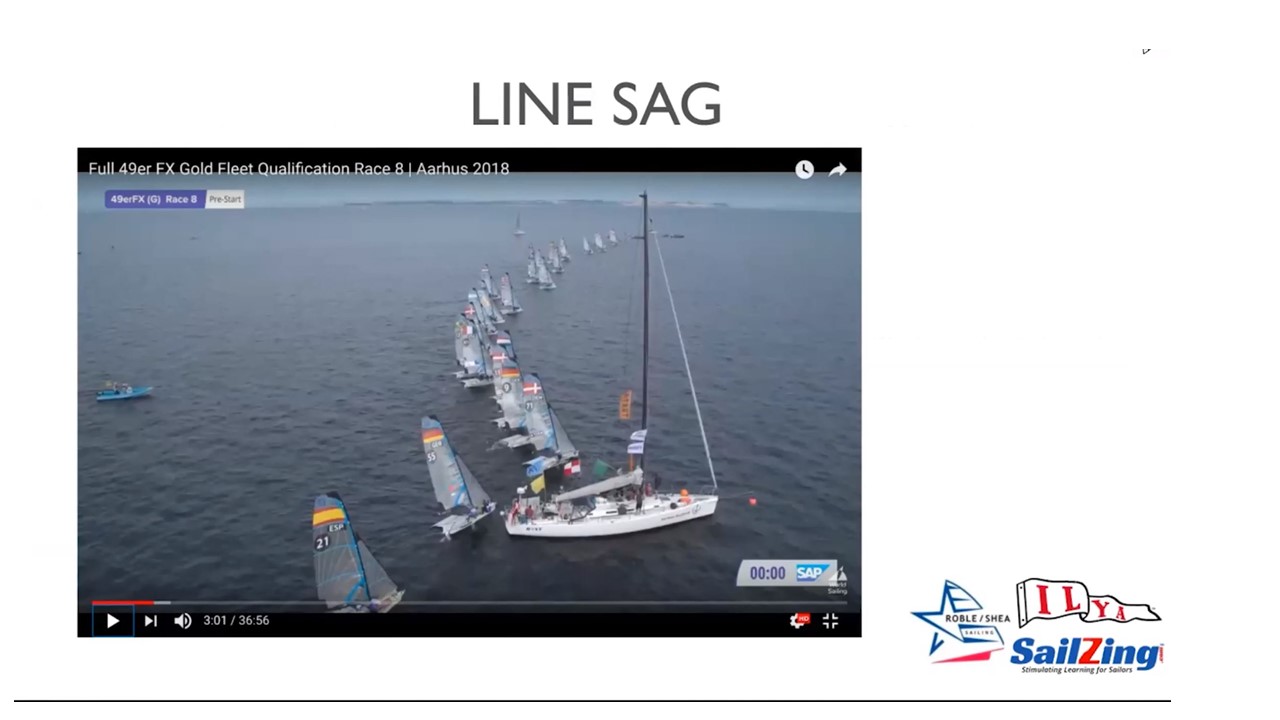Always, always use a line sight.
Dave Dellenbaugh, in Speed and Smarts (Issue 128)
Are you skeptical about the value of a line sight? Would it help to know that many top sailors consider it essential? Judging the location of the line is one of the many difficult things in starting. Assuming your fleet does not allow GPS technology, a good line sight will give you confidence on the starting line.
We originally published this post in June 2017 and decided to update it following the ILYA Roble/Shea Fast Forward webinar on starting. Roble/Shea and others recommend getting at least two line sights. Watch the webinar excerpt below or view the entire starting webinar here.
What is a Line Sight?
Sometimes called a “transit,” a line sight is a stationary reference point that you use to judge when you are on the starting line. To get a line sight, simply get on the line, look straight at the pin (port end of the line) and note a shoreline feature that you can easily distinguish.

When is a Line Sight Useful?
A line sight is effective if you can see the reference point and the pin during the last 20-30 seconds before the start. This will often be the case, especially in the following situations:
- Mid-line sag, especially in a large fleet or long line.
- Starting penalty in effect. Boats will be hanging back to avoid being over early.
- Starting near the pin.
Get Two Line Sights
Roble/Shea and others recommend getting at least two line sights – one from directly on the line, and another from behind the line, where you want to set up after your final approach. In light air, this might be one-two boat lengths below the line; in heavy air, it might be two-four boat lengths.

Having two (or three) line sights helps you visualize the distance remaining to the line. Brad Russell, in Sailing Scuttlebutt, talks about seeing the line sights not as snapshots, but as a starting “movie.” To get this movie in your head, do some practice runs before the start using your sights.
The shoreline reference for a behind-the-line sight depends on where you start. See the diagram below. For example, if you get a line sight two boat lengths behind the line at the RC boat, that that same sight would only be one boat length behind the line in the middle of the line.

Compensate for Your Viewing Position
If you sight directly down the line, your shoreline reference is only accurate for a person on the bow during the start. Without a crew member near the bow, many skippers doubt their ability to judge when the front of the boat reaches the line. Here’s a technique to build your confidence. See the illustration below.
- Sail parallel to the line about ½ boat length back. This approximates the skipper’s view during the start.
- Using the port end starting mark, find a shore reference point at each end of the line. Since you are sailing ½ boat length behind the line, the shore reference points will be different at each end.
- When starting, use the reference point for the end where you start. For a mid-line start, use a reference point in between the two end points.

Practice Technique
Here’s a drill to practice judging the line from Sailing Drills by Rick White.
- Set up a long starting line
- Boats sail across the line (near the middle) one at a time:
– Skipper and crew raise hands when you think you reach the line
– Coach blows whistle when you reach the line
– How did you do? - Get a line sight and try it again. Your results should improve.

Line Sight Alternatives
Can’t get a line sight or can’t use it? Here are some problems and alternatives:
- Problem: Boats obscuring the ends of the line. You got a line sight earlier, but now you can’t use it because other boats are in the way. This probably means you’re too far back. Move up. If the boats at the pin are obscuring the pin, sight through them as if they were the pin.
- Problem: No shore reference through the pin. You may be able to get a reference backwards through the committee boat.
- Problem: No shore reference either side. Here are a couple of alternatives:
- Match your bow to the boats around you. See our post on line sag for a discussion about matching bows. It helps if you know whether the boats around you are typically aggressive, or if they typically hang back.
- Start near an end. This makes it easier to judge the line. If you can see the eyes of the RC person watching the line, that’s a great line sight.
Sailors Helping Sailors
Will you share your knowledge with your related Comments below?
UGA Sailing: Line Sights – short, basic video
Starting Mentality – Learn to Be Aggressive



